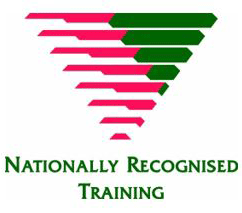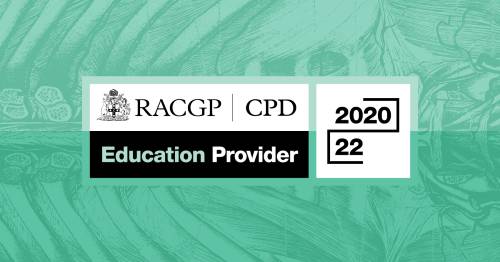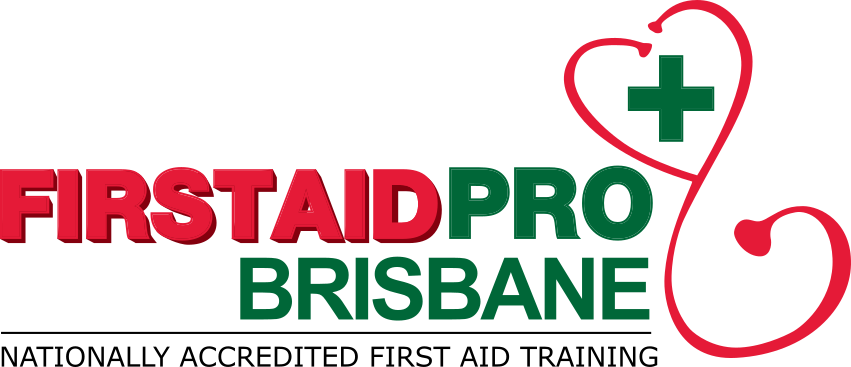Choose your training venue nearest to your location.
Course Name
HLTAID011 – Provide First Aid and CPR
Course Code Included
- HLTAID011 – Provide First Aid
- HLTAID010 – Provide basic emergency life support
- HLTAID009 – Provide cardiopulmonary resuscitation
Course Duration
5.5 Hours – NO ONLINE + Face to Face Training & Assessment
2 Hours – Online Training + Face to Face Assessment
Course Cost
From $97 (may vary)
Course Certificate
Issued Same Day (T&C)
Is the course accredited?
Yes
Does the course meet workplace requirements?
Yes
Provide First Aid

HLTAID011 Provide First Aid (inc CPR)
HLTAID011 Provide First Aid Course Brisbane
This course replaces the now superseded HLTAID003 Provide First Aid.
Do you want to complete the new HLTAID011 Provide First Aid, which includes a CPR course as quickly as possible with professional trainers for the best price? Then choose Brisbane First Aid. We are a well-established registered training organisation (RTO: 40407) running first aid courses right across Brisbane every day of the week. What’s more, we provide our quality training in a friendly and open atmosphere.
Brisbane First Aid is committed to tailored learning to ensure success. That’s why we offer choices for our students. Choose between learning online or face-to-face; it’s all about what works best for you!
Learning online allows you to complete the majority of work from your own home at your own pace before attending your closest training venue. Show the trained assessor what you have learned in a practical demonstration using manikins, AED’s, and First Aid Kit tools.
In comparison, our standard face-to-face format allows us to teach you the full course within under 6 hours from start to finish. This course is perfect for those who learn better in a traditional classroom environment.
We are a well-renowned registered training organisation (RTO: 40407) running daily first aid courses that are informative, innovative, and fun across Brisbane.
HLTAID011 Provide First Aid is the latest update of the nationally recognised general first aid qualification and is Brisbane First Aid Courses most popular and common First Aid course. It includes all the skills and knowledge required to provide a first aid response to a casualty in line with first aid guidelines as determined by the Australian Resuscitation Council (ARC), Safe Work Australia and other national peak clinical bodies, including the Australian Society of Clinical Immunology and Allergy (ASCIA). Provide First Aid also satisfies most First Aid occupational licensing law requirements.
The ARC recommends learners complete this course every 3 years to maintain First Aid validity and currency of knowledge and skill.
Why Choose Our HLTAID011 First Aid Course?
- Find a Cheaper Price, We'll Price Match
- First Aid Training with Flexible options
- Same-Day Certificate
- Accredited Certification, Nationally Recognised
- Workplace Training at your site
- Courses available 7 Days
- Royal Australian College of General Practitioners – endorsed
- Australian College of Nursing – endorsed
- Book Online or by Phone
Many First Aid Course Locations in Brisbane




HLTAID003 Provide First Aid is now HLTAID011
New Industry Standard
HLTAID011 Provide First Aid is the new industry standard for first aid training. It’s made up of these refreshed units of competency:
- HLTAID009 Provide Cardiopulmonary Resuscitation (Old Course Code: HLTAID001)
- HLTAID010 Provide Basic Emergency Life Support (Old Course Code: HLTAID002)
- HLTAID011 Provide First Aid (Old Course Code: HLTAID003)
Just a 5.5 hour in-class session
Practical training and assessment for this course are completed in a single-day 5.5 hour session starting at 9:00 am and finishing at 2:30 pm and includes:
- An interactive, multimedia presentation on all required first aid topics (see knowledge evidence below)
- An independent multiple-choice knowledge assessment on first aid topics covered in the presentation
- Trainer marking and feedback on knowledge assessment
- A detailed and comprehensive trainer-led demonstration on how to use first aid equipment and perform all required first aid techniques and skills (see performance evidence below)
- Trainer led practice and question time on all required knowledge and performance evidence, including the use of first aid equipment.
- Practical assessment of performance evidence in the form of role plays, observations, written and verbal incident/review reports and class debriefs
* To attend the course, you must read the learner guide. The number of study hours needed to complete the learner guide varies depending on your existing knowledge, skills and experience.*
No Online Assessment
Brisbane First Aid Courses Face-to-Face (NO online) course delivery option provides the most comprehensive First Aid training in Brisbane.
Unlike other First Aid training providers and delivery methods, all training and assessment for Brisbane First Aid Courses HLTAID011 Provide First Aid course are completed in a single day, in class and under the supervision and guidance of a qualified First Aid Trainer.
With more time spent in class, learners benefit from the added support that can only come from a face-to-face course, enabling them to ask their Trainer questions and have them clarify, repeat, contextualise and demonstrate in real-time all the knowledge and practical skills required to provide first aid assistance in almost any situation.
First Aid Certificate Issue – Same Day
Successful completion of all the knowledge, performance evidence and criteria of Brisbane First Aid HLTAID011 Provide First Aid course to a satisfactory level will result in the awarding of the following nationally recognised units of competency:
- HLTAID009 – Provide cardiopulmonary resuscitation (CPR)
- HLTAID010 – Provide basic emergency life support
- HLTAID011 – Provide First Aid
The Australian Resuscitation Council (ARC) Guidelines recommend HLTAID011 Provide First Aid be updated every 3 years and HLTAID009 Provide cardiopulmonary resuscitation (CPR) be updated every 12 months to remain valid.


Provide First Aid Course Venues in Brisbane
Brisbane First Aid Learning Online HLTAID011 Provide First Aid courses run 7 days a week, 50 weeks a year, right across the Brisbane CBD and surrounding suburbs. Suburbs serviced include:
Course requirements
In line with industry and organisational obligations, Brisbane First Aid Courses can only accept and issue nationally accredited units of competency to learners who are:
- At least 14 years of age (those who are under 18 must present a signed Parent or Guardian Consent Form)
Learners should also physically be capable of completing the performance requirements of this unit. At a minimum, learners will need to be physically capable of:
- Performing at least 2 minutes of uninterrupted single rescuer cardiopulmonary resuscitation (CPR) (5 cycles of both compressions and ventilations) on an adult manikin placed on the floor
- Performing at least 2 minutes of uninterrupted single rescuer cardiopulmonary resuscitation (CPR) (5 cycles of both compressions and ventilations) on an infant resuscitation manikin placed on a firm surface
- Operating an automated external defibrillator (AED) to deliver at least one shock
- Providing first aid assistance for a number of conditions including anaphylaxis, asthma, non-life-threatening, choking, envenomation, fractures, dislocations, sprains, strains, minor wounds, nosebleed, shock
USI requirements
A USI (unique student identifier) number is a mandatory requirement for any student wishing to undertake vocational training.
A USI number is unique to you and provided by the government to keep a secure online record of your VET certifications.
You can look up your number or register for a USI number quickly and easily by clicking HERE.
HLTAID011 Provide First Aid includes CPR Knowledge evidence
After this course, learners will have a clear understanding of the following guidelines and procedures:
- ARC Guidelines relevant to the provision of first aid
- First aid guidelines from Australian national peak clinical bodies
- Potential incident hazards and risk minimisation processes when providing first aid
- Infection control procedures, including use of standard precautions and resuscitation barrier devices
- Requirements for the currency of skill and knowledge
- First aid codes of practice
- Appropriate workplace or site procedures relevant to the provision of first aid
- Contents of first aid kits
Legal, workplace and community considerations, including:
- Duty of care requirements whilst performing first aid and CPR
- Own skills and limitations During A first aid and CPR emergency
- Consent and how it relates to the conscious and unconscious casualty and when to administer CPR
- Privacy and confidentiality requirements in relation to a first aid emergency
- Awareness of the potential need for stress management techniques and available support for rescuers after dealing with a first aid emergency
Considerations when providing CPR, including:
- Upper airway and effect of positional change during CPR
- Appropriate duration and cessation of CPR
- Appropriate use of an AED- Defibrillator
- Safety and maintenance procedures for an AED (Defibrillator)
- Chain of survival management during CPR and first aid
- How to access emergency services during a first aid emergence
Techniques for providing CPR to adults, children and infants, including:
- Applying DRSABCD protocol
- How to recognise that a casualty is unconscious and not breathing normally
- Rate, ratio and depth of compressions and ventilations during CPR
- Correct hand positioning for compressions during cardiopulmonary resuscitation
- Basic anatomy, physiology and the differences between adults, children and infants relating to CPR
Signs, symptoms and management of the following conditions and injuries:
- Allergic reaction, how to provide First aid management
- Anaphylaxis management using an EpiPen during first aid
- Asthma management how to use Ventolin during first aid management
- Non-life-threatening and life-threatening bleeding
- Burn management and how to provide first aid
- Cardiac conditions, including chest pain and chest pain, causes
- Choking, baby choking and choking first aid
- Diabetes, type 2 diabetes, diabetes symptoms and how to call diabetes Australia for post-incident advice
- The drowning, drowning and secondary drowning and how to perform CPR and use an AED
- Envenomation and envenomation first aid
- Eye injuries signs and symptoms
- Fractures, types of fractures
- Dislocations, shoulder dislocations
- Strains vs sprains
- Injuries to the head, neck and spinal injuries
- Hypothermia and what is hypothermia
- Hyperthermia and hyperthermia definition and First Aid management
- Minor wounds and wound first aid
- Nose-bleed, toddler nose bleed and nose bleed first aid
- Poisoning, covering food poisoning and food poisoning symptoms
- Seizures, types of seizures and first aid management
- First aid for shock
- Needlestick injury first aid
- Stroke, stroke signs and stroke symptoms and first aid management
Performance evidence
At the conclusion of this course, learners will be able to:
- Manage, in line with ARC guidelines, the unconscious, breathing casualty, including appropriate positioning to reduce the risk of airway compromise
- Manage, in line with ARC guidelines, the unconscious, non-breathing adult, including:
- Performing at least 2 minutes of uninterrupted single rescuer cardiopulmonary resuscitation (CPR) (5 cycles of both compressions and ventilations) on an adult resuscitation manikin placed on the floor
- Following the prompts of an automated external defibrillator (AED) to deliver at least one shock
- Demonstrating a rotation of single-rescuer operators with minimal interruptions to compressions during CPR first aid and CPR training
- Responding appropriately in the event of regurgitation or vomiting
- Manage, in line with ARC guidelines, the unconscious, non-breathing infant, including:
- Performing at least 2 minutes of uninterrupted single rescuer CPR (5 cycles both compressions and ventilations) on an infant resuscitation manikin placed on a firm surface
Manage casualties, using a First Aid Kit to assist the following conditions:
- Anaphylaxis first aid
- Asthma first aid in line with asthma foundation guidelines
- Non-life-threatening bleeding first aid
- Choking and CPR training
- Envenomation, using pressure immobilisation for snakebite management
- Fractures, dislocations, sprains and strains, using appropriate immobilisation techniques
- Minor wound cleaning and dressing
- Nosebleed and infection control first aid
- Shock, unconscious and CPR using an AED
First aider will conduct a Secondary Survey
- Identify casualty illness or injury through history, signs and symptoms
- Use personal protective equipment (PPE) as required
- Provide appropriate first aid treatment
- Convey incident details to emergency services or advising casualty on any required post incident action
- Provide an accurate verbal and written report of the incident
- Review the incident.
DRSABCD protocol
Our accredited First Aid Training teaches you about the DRSABCD protocol. It’s a way of responding to medical emergencies that you can memorise. You think of DRSABCD as Drs Abcd. The letters stand for Danger, Response, Send, Airway, Breathing, CPR and Defibrillator. These represent the steps you follow in an emergency. The first thing to do is check for danger. Then you see if the casualty responds. Next, you send for emergency services. After that, you make sure the airways are clear. Then check that they are breathing and start CPR if necessary. The last thing you do is use the defibrillator.
As well as this, you practise CPR by kneeling on the floor and pushing on a manikin. We teach you according to Australian Resuscitation Council (ARC) guidelines. Managing asthma is another important part of the course, along with knowing how to use an EpiPen in case of anaphylaxis, you will be equipped to effectively respond to the most common emergencies. Such critical skills and knowledge are essential for aged care workers, healthcare professionals and nurses. But anyone benefits from this first aid training because emergencies happen anywhere. In summary, this course prepares you with the skills and knowledge required to respond effectively in a medical emergency.
Eight New First Aid Units of Competency Released
- HLTAID009 Provide cardiopulmonary resuscitation – sometimes referred to as CPR (supersedes HLTAID001 Provide cardiopulmonary resuscitation)
- HLTAID010 Provide basic emergency life support – sometimes referred to as BELS (supersedes HLTAID002 Provide basic emergency life support)
- HLTAID011 Provide First Aid – sometimes referred to as First Aid (supersedes HLTAID003 Provide first aid)
- HLTAID012 Provide First Aid in an education and care setting – sometimes called Childcare first aid (supersedes HLTAID004 Provide an emergency first aid response in an education and care setting)
- HLTAID013 Provide First Aid in a remote or isolated site (supersedes HLTAID005 Remote first aid)
- HLTAID014 Provide Advanced First Aid (supersedes HLTAID006)
- HLTAID015 Provide advanced resuscitation and oxygen therapy (supersedes HLTAID007)
- HLTAID016* Manage first aid services and resources (supersedes HLTAID008)
*Please note Brisbane First Aid does not currently offer this unit
Course Calendar for Provide First Aid Course in Brisbane
|
|||||||||||||||



